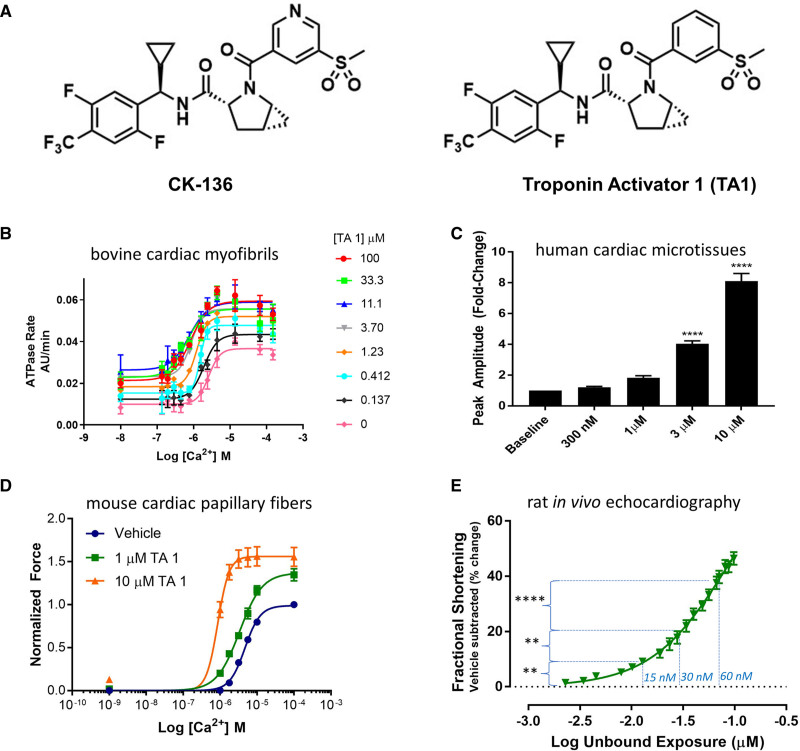Figure 1.
In vitro, ex vivo, and in vivo characterization of TA1.
A, Structures of CK-136 (formerly known as AMG 594) and closely related analogue TA1 that was investigated in this study. B, TA1 sensitizes the ATPase activity of bovine cardiac myofibrils to activation by calcium. The ATPase activity of skinned bovine cardiac myofibrils was measured as described in Supplemental Methods. n=4. Fitted values are provided in Table S1. C, TA1 increases contractility of human cardiac microtissues. Maximum twitch amplitude of cardiac microtissues in response to increasing concentrations of TA1. Microtissues were treated with escalating doses, and data are normalized to each tissue’s baseline (ie, untreated) measurement. Summary data are mean±SEM. ****P<0.0001 (1-way ANOVA with Dunnett multiple comparisons test). n=6. D, TA1 increases calcium sensitivity and isometric tension at saturating calcium concentrations in permeabilized adult mouse cardiac muscle fibers. Force production by detergent-skinned adult mouse cardiac muscle fibers was measured at 10 °C. Data shown are mean±SEM. n=3 to 4. Fitted values are provided in Table S2. E, Effect of TA1 on fractional shortening (echocardiography; short axis, M mode) in the normal rat. Baseline-corrected, vehicle-subtracted fractional shortening was plotted against logarithmically transformed measured total whole blood concentration of TA1. The data are presented as mean±SEM. **P<0.01 and ****P<0.0001 (1-way ANOVA with Bonferroni multiple comparisons test). n=8 to 10. Vertical dotted lines show the effect of TA1 concentrations used in the nuclear magnetic resonance perfusion experiments 15 nmol/L TA1 (at −1.82 log), 30 nmol/L TA1 (−1.52 log), and 60 nmol/L TA1 (−1.22 log). AU indicates arbitrary units.

